Author: Malcolm Frazer
I’d assume most homebrewers who’ve been at it for 10 years or more have a virtual brew kettle graveyard similar to mine, the exception being those who began the hobby when they already had a career and started brewing in an all-growsed-up-big-boy house.
I got my start in 1998 while still in the Navy and sharing an apartment with 5 other dudes. Given my space and financial limitations, I started making beer with a humble canning pot that could barely handle partial boils for 5 gallon extract batches. Over the years that followed, I went through many iterations, a few cheapies that had rust problems, one that would scorch wort easily, and the popular keggle route. I was like an unsuccessful dater– I knew what I didn’t want, though instead of casual niceties, I was often saying, “it ain’t me, it’s you.”
While a ton of cool brewing gear has hit the market over the last decade, something that remains a staple in every brewery is the kettle, the options of which are quite vast these days, forcing brewers to consider a whole host of stuff when making a purchase– number of ports, stainless or aluminum, welded or weldless, and not to mention price. Whether entering the hobby for the first time or upgrading one’s setup, the purchase of a kettle comes with some commitment, as it’s more than just a hunk of metal, but the vessel that will assist in the turning of grain into delicious beer.
 Spike Brewing is a kettle manufacturer out of Milwaukee, WI started by Ben Caya, a Mechanical Engineering graduate from the University of Wisconsin- Milwaukee, who began selling brew kettles to homebrewers in 2009. I recently received their new V3 15 Gallon kettles to review and have put them through 10 batches, enough to give me a good idea of the ins and outs.
Spike Brewing is a kettle manufacturer out of Milwaukee, WI started by Ben Caya, a Mechanical Engineering graduate from the University of Wisconsin- Milwaukee, who began selling brew kettles to homebrewers in 2009. I recently received their new V3 15 Gallon kettles to review and have put them through 10 batches, enough to give me a good idea of the ins and outs.
Over the years, I’ve developed an exhaustive wishlist that includes everything I think would make for the perfect kettle. For this review, I’ll be going through this list and discussing the extent to which the Spike Brewing V3 Kettles met my expectations, as well as touching on a few unexpected features.
Stainless Steel
I know of plenty of people who make great beer using aluminum kettles and don’t believe they have a noticeable impact on beer quality. I desired stainless because I not only is it easier for me to clean, but it’s also incredibly durable, and I plan to be doing this for the rest of my life.
The Spike Brewing V3 kettle is made of heavy-duty 304 stainless steel with 1.2 mm thick walls. Neither too heavy nor too clumsy, the V3 is one of the sturdiest homebrew kettles I’ve come across of similar size, something Spike Brewing wears as a badge of honor, claiming to be thickest currently on the market. At a mere 0.3 mm thinner than the walls of a sanke keg, these kettles will easily withstand the typical abuse of a homebrewer.
Tri-Clad Bottom
This wasn’t too high up on my wishlist, but a desired feature I was glad to find included on the V3 kettle. I perform decoctions a couple times per year, which presents the common issue of scorching the wort. A thick tri-clad bottom helps to reduce this risk by distributing the heat evenly across the bottom of the kettle.
I recently boiled the living hell out of a double decoction Hefeweizen and nary a mark was left on the bottom of the kettle, leaving me with a desirable light golden color despite the ultralight grist.
One of the trade-offs of a thicker bottomed kettle is that it takes a bit longer to heat up and cool down. Compared to my much thinner single-ply stainless kettles, wort in my V3 kettle took about 6 more minutes to reach a boil, while chilling took maybe 2 minutes longer. Nothing huge, but something to consider for those interested in shaving as much time off their brew day as possible.
Flat Bottom Externally w/ “Stepped Bottom” Internally
One thing some people appreciate about keggles is their dished internal bottoms because it provides a place for kettle trub to gather. However, in my experience, it makes racking every last drop of wort near impossible and the outer part’s convex shape allows for heat to come up the sides, which can lead to overheated valves and sight-glasses, not to mention stability issues with many outdoor burners. Personally, I found this characteristic more annoying than helpful and as such was initially put off when I noticed what Spike Brewing refers to as the “stepped bottom design” inside the kettle.
My main concern was that this would create too much deadspace and force me to come up with a workaround to maintain my brewhouse efficiency. A quick calibration proved me wrong, as I found the deadspace held a mere 3.5 quarts after draining with the side pickup tube, which could be reduced even further for those less averse to some kettle trub making it into the fermentor by tilting the kettle.
Welded Fittings
I’d always viewed welded fittings as a luxury, certainly not a deal breaker for me, but they seemed easier to clean and maintain. The Spike Brewing V3 kettle comes standard with couplings attached via pristine sanitary welds, and you can choose from any number of configurations that fit your ideal setup.
I’ve used weldless fittings in the past, they work just fine, though I’m the type who tended to ignore dismantling them for a good cleaning often enough. For me, welded fittings are preferred because they have less nooks and crannies for muck to get stuck in.
Well Designed Lid
It may seem petty, but a thoughtfully designed lid is a feature that I trust would be appreciated by those who have used clunkier options. I wanted something that could be removed and easily rested on the kettle somehow. While the lid for the Spike Brewing V3 can be placed on the handle, I personally would have liked to see a welded hook or some other clever handle design that would allow me more places to hang the lid. Regardless, this was a pleasant upgrade from what I’ve used in the past.
Furthermore, when it comes to lids, I require one that fits nice and snug with a deep recess that makes sealing with tape or plastic wrap easy, ensuring my kettle soured beers are safe from imposing oxygen and unwanted critters. The V3 definitely met this demand.
Handles That Don’t Burn Me
Who hasn’t thoughtlessly grabbed a kettle handle during the boil only to writhe in agony over the burn? This is no longer a major issue with the V3 kettle, as the handles are covered with wear-resistant silicone that also makes for a more comfortable carrying experience.
Internal Volume Markings
This was a big deal for me. I loathe sight glasses, and while the V3 does have that option available, I personally think the internal volume markings are the way to go.
Jury is still out on their durability, but Spike Brewing states they are permanently etched onto the stainless. However, they also suggest not using abrasive cleaners such as Bar Keeper’s Friend on the graduated markings in order to preserve their vibrancy. Easy enough, but it does make me wonder how a few hundred cycles of hot acidic wort will affect them. Ten batches in and they still look like new.
Close Profile 3-Piece (or better) Ball Valve
Unfortunately, it seems my ideal combination is hard to find. While Spike Brewing offers an optional 3-piece ball valve, the entire assembly juts out a full 6.5 inches from the side of the pot.
Perhaps it’s a byproduct of the coupling or an issue with the way 3-piece ball valves are designed, but I suppose a benefit is keeping the valve handle further from the heat source. However, I’d really love an option less likely to reach out and grab me while walking by. In the end, it works like other valve assemblies I’ve used– good enough.
Pickup Tubes
Another optional add-on is a pickup tube and Spike Brewing offers a few types that can be customized for particular applications. I chose to go with the side pickup tube since I don’t use a false bottom and I chill my wort using a whirlpool recirculation rig with a pump and immersion chiller, allowing me to leave most of the kettle trub behind when racking to fermentors.
One unique feature of Spike Brewing’s pickup tubes is that they come with their proprietary “push-to-connect” fittings that allows for easy removal for cleaning or quick repositioning.
Compared to other types of quick disconnect setups I’ve used, I thought this was pretty killer. Also, the pickup tubes come with a slightly larger than standard 5/8″ diameter, resulting in a happier pump during whirlpool with less cavitation.
Appropriately Sized
As most seasoned brewers know, one’s finishing batch size does not equate to the volume requirements of the kettle, as there needs to be room for the boiloff amount as well as the hot break in order to reduce the risk of a boilover. Spike Brewing offers kettles in logical sizes for conventional homebrew batch volumes and even leaves about 3 quarts of extra “oops” room. My 15 gallon kettles work perfect for 10 gallon batch sizes, which usually start with just about 13 to 14 gallons pre-boil.
Given my dedication to the exBEERimental cause, I needed kettles that would work well for both 5 and 10 gallon batches. Due to the 1.2/1 height-to-width ratio of the V3 kettle, volume losses on smaller batch sizes are manageable and have a minimal impact on my brewhouse efficiency.
| THE VERDICT |
Function over form, that’s my philosophy, though it seems in the brewing world, good design often equates with good looks. That’s certainly the case with the Spike Brewing V3 kettle. It truly is a gorgeous piece of gear with so many convenient features that make for an easy and enjoyable brew day. In a perfect world, I might change a few minor things such as providing a lower profile valve option or adding a hook to the lid, but in the end the V3 kettle is easily one of the best I’ve used in my nearly 15 years of homebrewing. When it comes to selecting a piece of equipment as integral as a brew kettle, I think it’s important to consider various options and what each has to offer. For me, the combination of durable 1.2 mm 304 stainless steel, thoughtful design choices such as the stepped bottom, and unique options like the larger diameter push-to-connect pickup tubes make the Spike Brewing V3 kettle one I’m pleased to use as well as recommend to others with confidence.
Spike Brewing V3 kettles are available at HomeBrewSupply.com and direct from SpikeBrewing.com!
Support Brülosophy In Style!
All designs are available in various colors and sizes on Amazon!
Follow Brülosophy on:
FACEBOOK | TWITTER | INSTAGRAM
| Read More |
18 Ideas to Help Simplify Your Brew Day
7 Considerations for Making Better Homebrew
List of completed exBEERiments
How-to: Harvest yeast from starters
How-to: Make a lager in less than a month
| Good Deals |
Brand New 5 gallon ball lock kegs discounted to $75 at Adventures in Homebrewing
ThermoWorks Super-Fast Pocket Thermometer On Sale for $19 – $10 discount
Sale and Clearance Items at MoreBeer.com
If you enjoy this stuff and feel compelled to support Brulosophy.com, please check out the Support Us page for details on how you can very easily do so. Thanks!


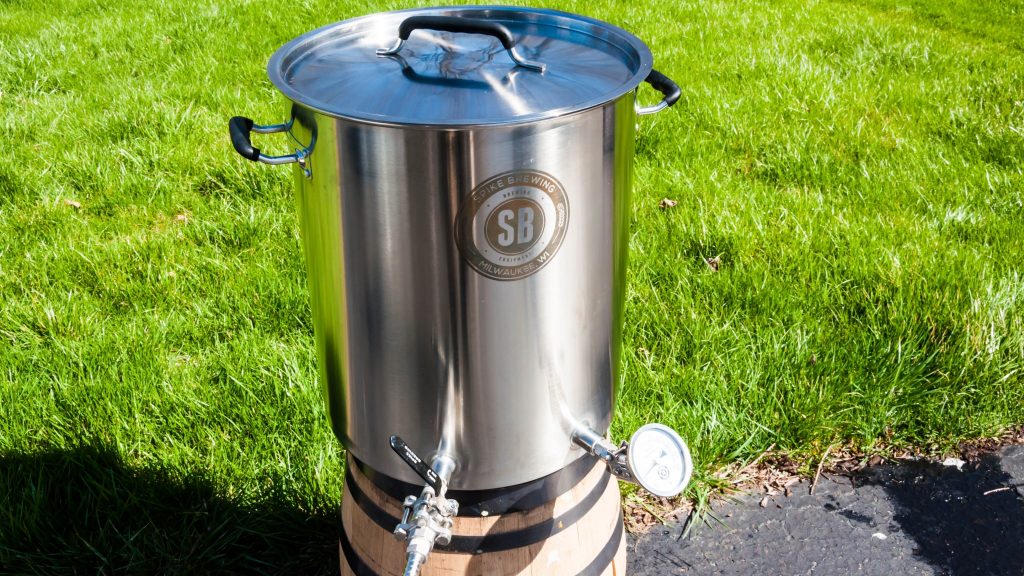
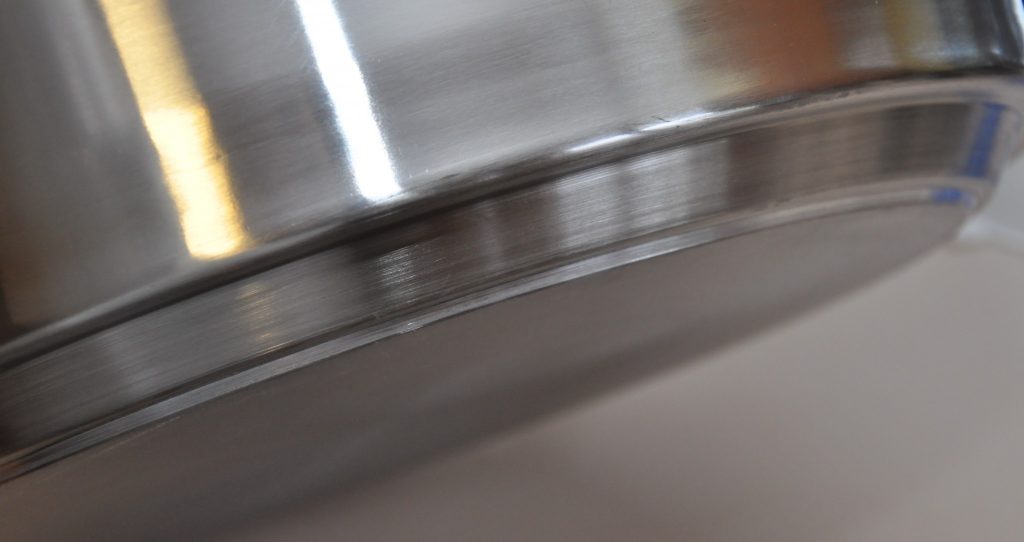
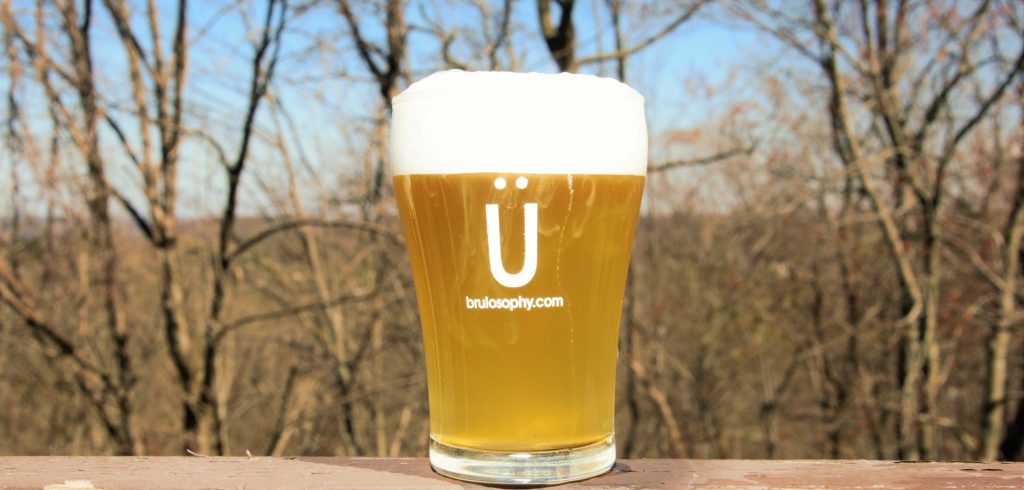
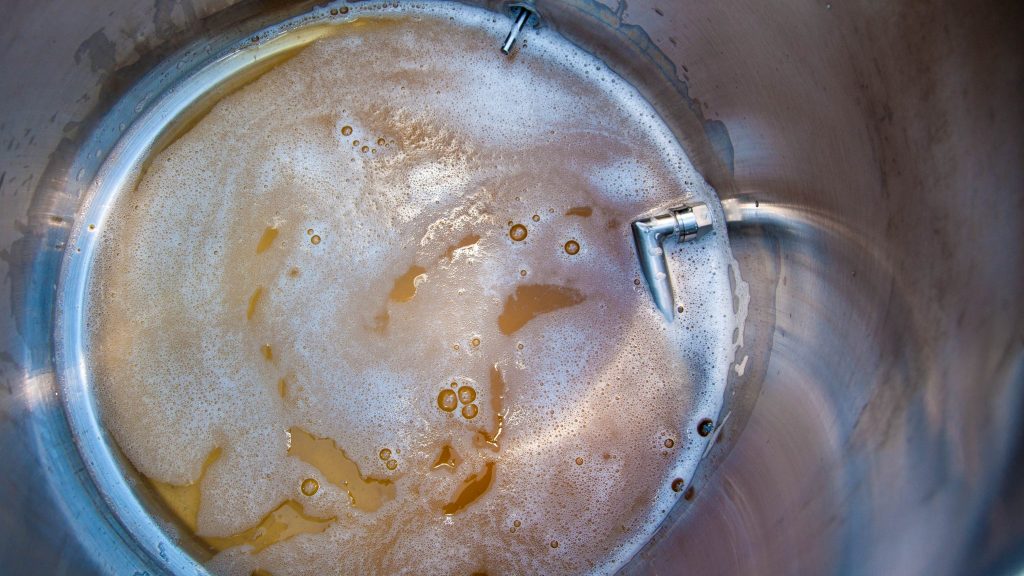
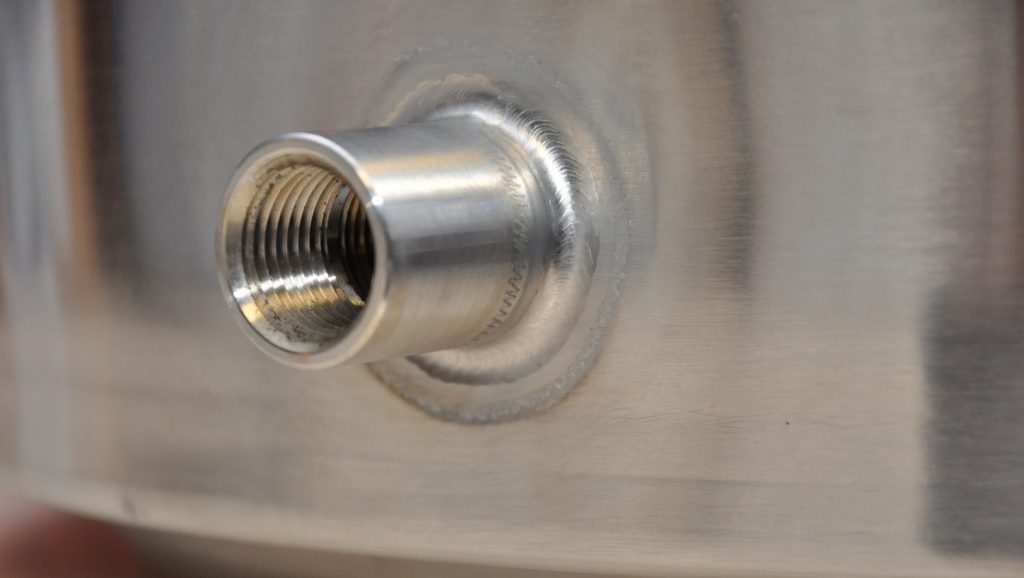
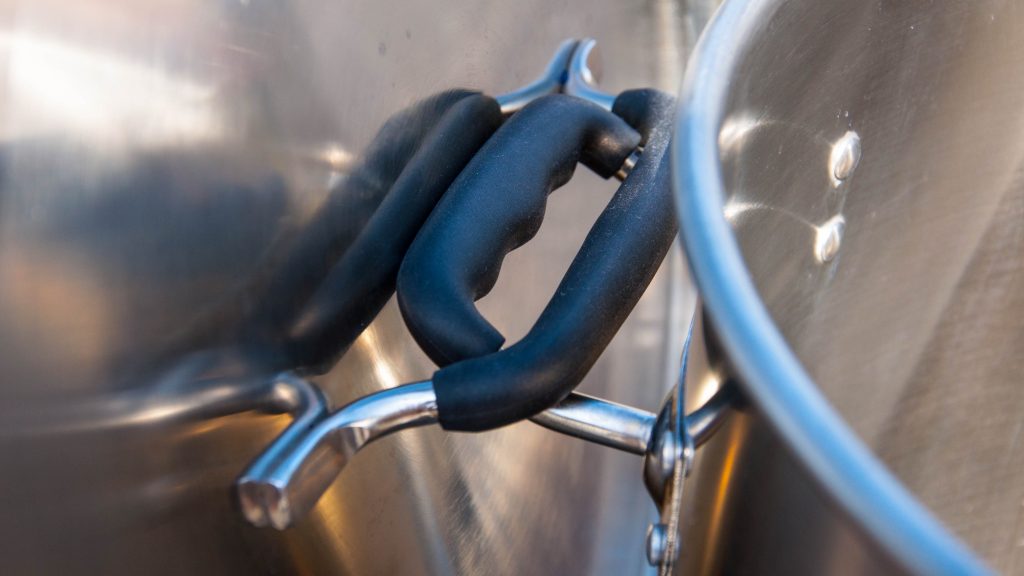
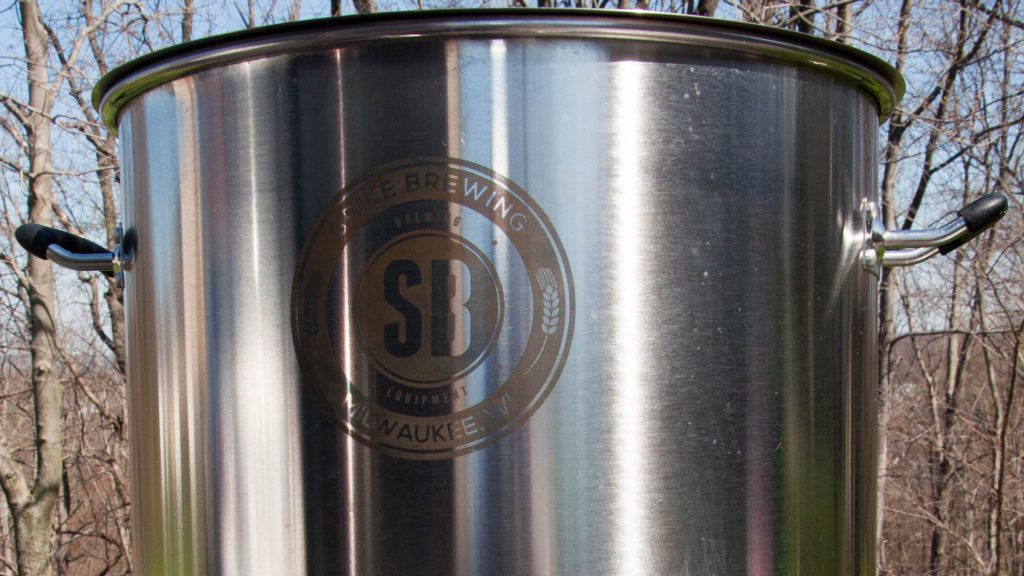
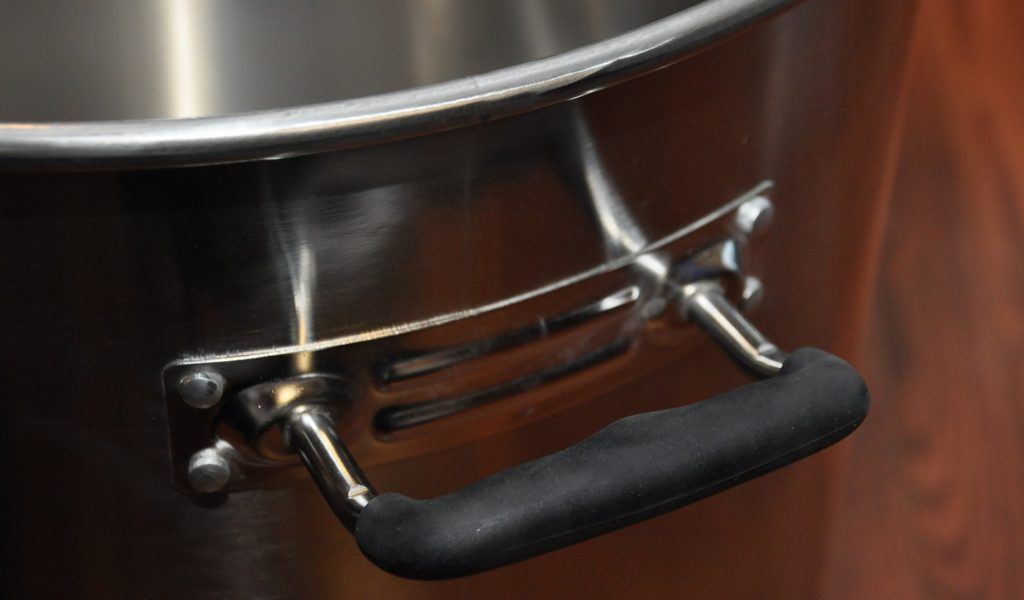
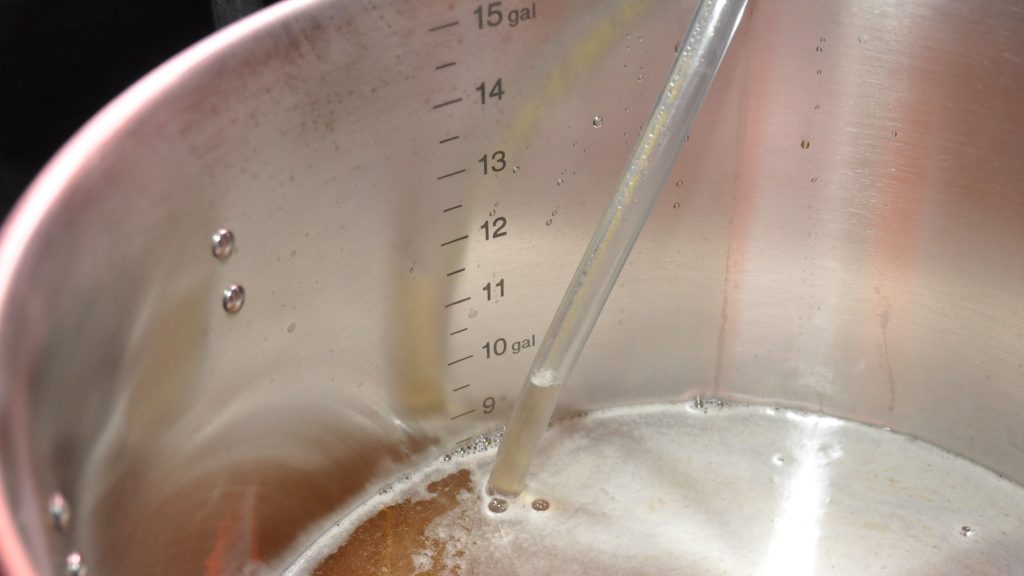
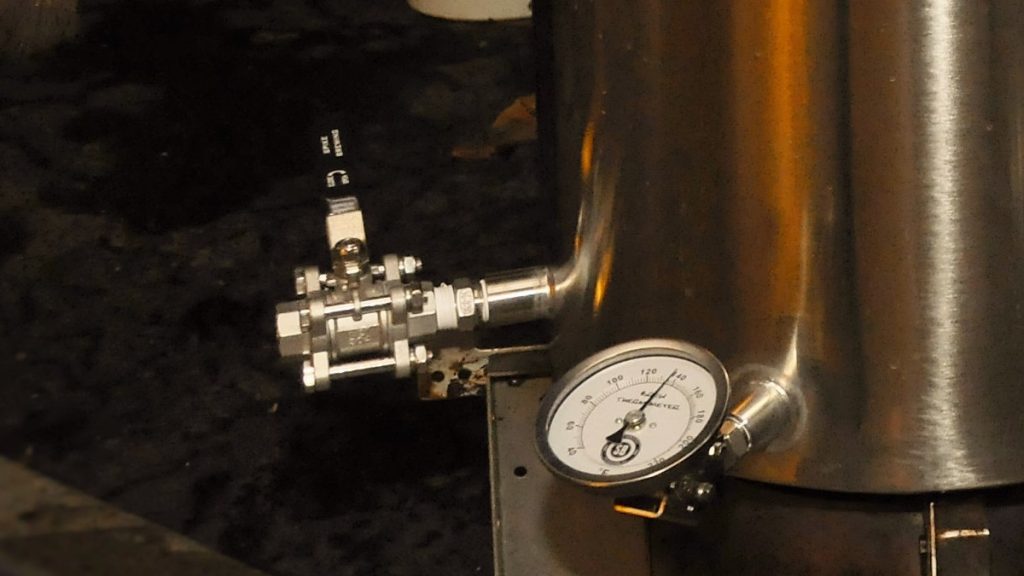
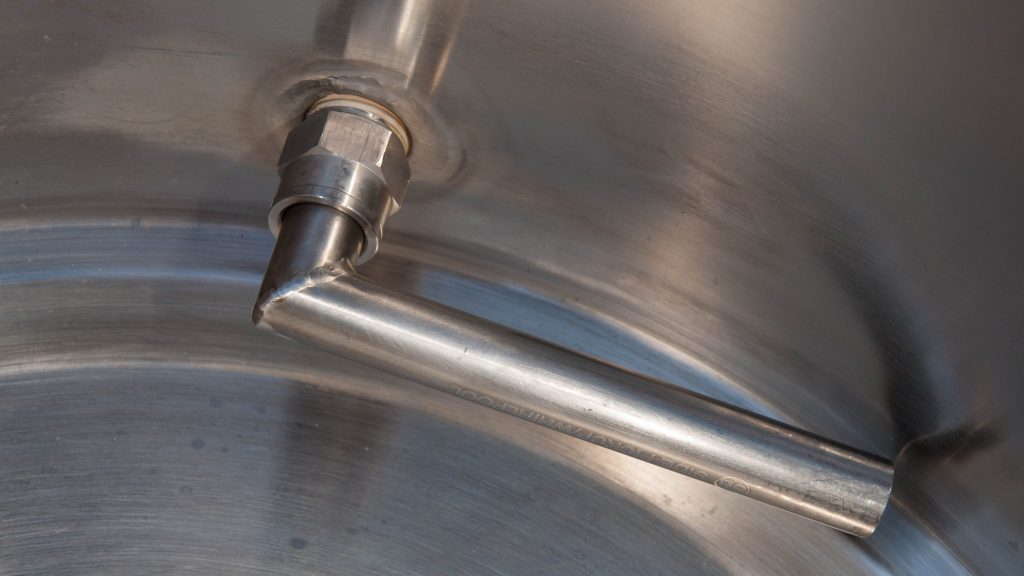
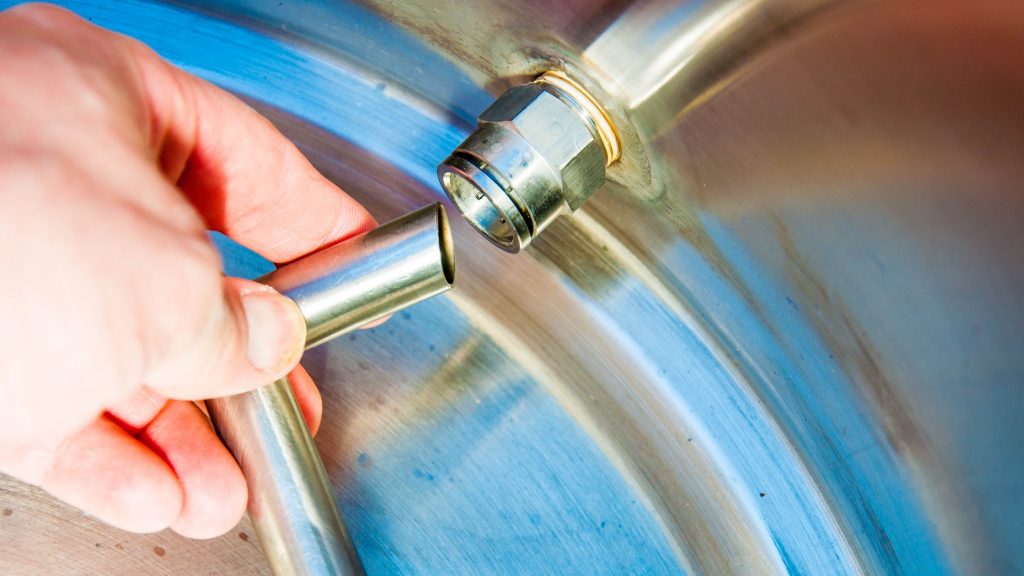
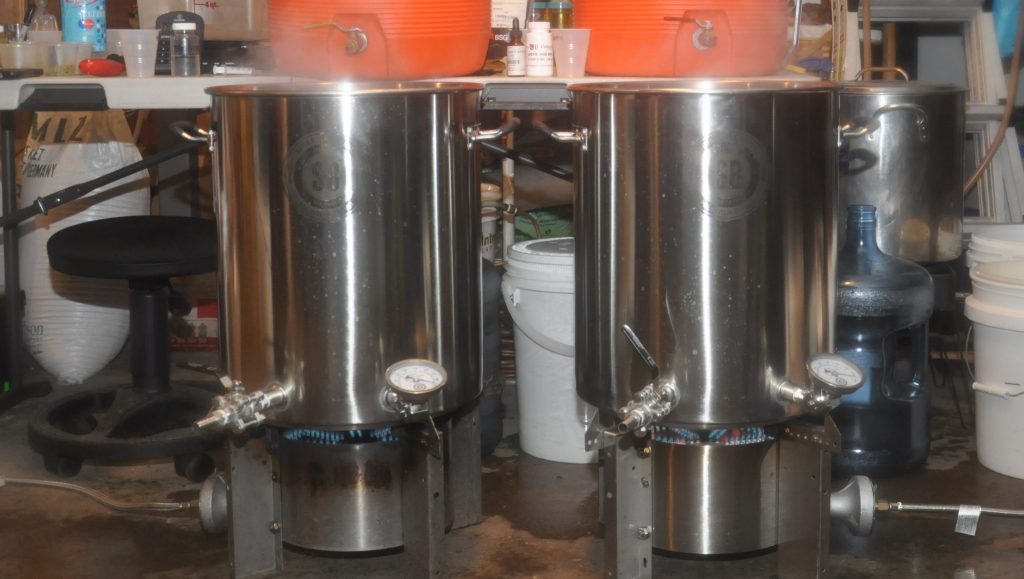










20 thoughts on “Product Review | Spike Brewing V3 Brew Kettle”
The tri-clad bottom is a big plus for extract Brewers and folks who like to add stuff like candy syrup….stuff that has a tendency to sink to the bottom and scorch.
Source: have scorched the shit out of extract and candy syrup, even when being careful.
FYI, Bar Keeper’s Friend contains oxalic acid, which will etch stainless steel and could potentially remove the graduated lines with repeated use. This is probably why they suggest not to use it.
I have emailed Spike asking the question but figured I’d ask you as well – can you go into more detail on the dip-tube quick connect feature? Does it only click in at one angle, or can you adjust from, say, one gallon of dead space to 2 gallons for a really hoppy beer? If adjustable, is it infinity adjustable or are there pre-set positions? And once set, how easy would I be to accidentally bump the tube and knock it down too low when adding an immersion chiller or something? Thanks!
You have limited ways that it will mount. It has to be pushed in straight to seat properly in the coupling. One in place – it won’t move until you pull it out. My chiller rests on it (Jaded Hydra = heavy) and my spoon hits it all the time. Hasn’t moved once. Hard to explain until you feel it lock in. But it’s secure!
It’s just a push to connect fitting. I’ve handled these kettles, you can position it however you want.
And yes, if you bumped it with your immersion chiller, it would probably touch the bottom.
My exact kettle. I love it! Spike also now offers a few different versions of the dip-tube depending on your specific application. I’m going to try my first 10 gallon batch this weekend!
That seems to be one bad ass kettle.
“For me, welded fittings are preferred because they have less nooks and crannies for muck to get stuck in.”
Except it still has female NPT threads, which are nigh impossible to clean. Any type of NPT is in no way considered sanitary. If you want clean, get tri-clamp.
Small wire brush (brass or copper that won’t scratch the Stainless) and some star-san would likely do the trick.
They offer a port brush (http://spikebrewing.com/collections/accessories/products/port-brush) and they are still much easier to clean than weld-less fittings. Plus it’s the hot side of brewing; everything is sanitized in the boil anyways. TCs are overkill on the hot side IMO.
Beautifully written: “and nary a mark was left on the bottom of the kettle”.
Looks like a nice kettle. I personally prefer the internal volume markings, as well. One fewer thing to clean.
How does their push-to-connect pick-up tube fit? Is there an internal o-ring, or is it just a friction fit?
I have a custom Spike 50G V3 kettle, it beats everything I’ve laid eyes on including the expensive Blichmann gear:
Welded fittings. I have 2 more-beer kettles with welded fittings and there is no going back to weldless for me. The weld quality is also excellent, very impressive finish.
Customization of fittings at a reasonable price. On anything over 20 gallons 1/2″ fittings just don’t cut it so I went with 1.5″ tri-clamp for versatility of fittings and the high flow. I also added a whirlpool port…all for: $80 extra!
Thick walls on the kettle, big heavy kettles can dent easily if bumped into things…not a concern with these.
Volume markings inside kettle (site glasses are ridiculous to clean).
Great service! The owner Ben promptly responded to my sporadic emails for a year before I pulled the trigger and ordered!
The only thing I wish it had is imperial AND metric volume markings.
I think the metric markings is a good critique and wish I caught that!
Thanks for your response.
Just curious – have you ever checked the accuracy of the volume etchings? I own a 15 gallon Spike Kettle and I recently discovered the volume etchings are not that useful. I carefully checked them by weighing out room temperature water one quart at a time. Here is what I found:
5 gallons measured = 4.7 gallons on kettle
10 gallons measured = 9.95 gallons on kettle
14 gallons measured = 14.1 gallons on kettle
-Had to split this into two replies otherwise my ‘post comment’ button disappeared-
When I contacted Spike about this I was informed that this is within their tolerances, and they wanted to know how an error of 0.3 gallons would be an issue. I like to have accurate measurements, so for me it is an issue, but one that I will have to work around. It’s otherwise a very good kettle and to their credit they always respond quickly to any questions.
Thanks for the update!
Think we discussed that you could use a custom marking (battery etch) or just make a mental note.
That is an idea. Perhaps I will polish off the etchings from the factory and look into making my own.
Just planning out a new setup and noticed your critique on the valve. There are male to female ball valves available. Here is a nice cheap brass one. http://www.mscdirect.com/browse/tnpla/62821996 Seems like one could be welded onto a 3 piece valve plate also.
Nevermind, Spike thought ft it already. http://spikebrewing.com/products/1-2-npt-stainless-steel-ball-valve-3-piece